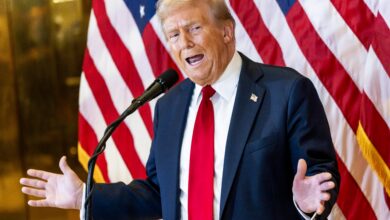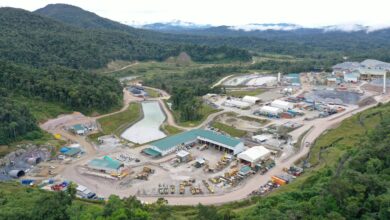Inflation, Rates and More Investment, Challenges for Latin American Economies for 2024
The economic slowdown, inequality, and the rising cost of debt are some of the common economic challenges of Latin America for 2024, to which are added other more specific ones such as hyperinflation in Argentina or the boost of key economic sectors in Mexico, Chile, or Brazil.

Photo: Adobe Stock
EFE
Escucha este artículo
Leer en español: La inflación, los tipos y más inversión, retos de las economías latinoamericanas para 2024
ECLAC Adjusts Growth Projection for 2023
The Economic Commission for Latin America and the Caribbean (ECLAC) raised its regional GDP growth projection for 2023 to 2.2%, but warned that the global macroeconomic scenario remains "complex."
The panorama in Argentina is complex with around 45% of the population living in poverty and with inflation of 160.9% year-on-year, so the economic challenges facing the country are multiple but the first and most urgent is to stabilize the macroeconomy.
The new president, the libertarian Javier Milei, announced last week a "shock" plan, which includes a strong fiscal adjustment and the "liberation" of the "repressed" prices of the economy.
One of the challenges of the new Government will be to achieve financial balance (primary fiscal result and payment of debt interest) in 2024, which means at least achieving a primary surplus equivalent to 2% of GDP.
Another challenge is to resolve the problem of the Central Bank's large liabilities – some 25,000 million dollars in instruments placed between commercial banks -, stop monetary issuance and seek a new agreement with the International Monetary Fund, to which Argentina owes 46,000 million Dollars.
The giant will lose strength
The Organization for Economic Cooperation and Development (OECD) noted in its latest report that Latin America must adopt an ambitious and broad investment agenda to reduce poverty and extreme poverty.
Brazil, the largest Latin American economy, will lose steam next year, as the OECD estimates growth of 1.8% in 2024, compared to the 3% estimated for 2023, which may complicate the financing of the country's large social programs. Government of Luiz Inácio Lula da Silva.
Behind the brakes, there is an agricultural sector in trouble due to the El Niño phenomenon. The lack of rain and high temperatures in the center and north of the country have forced the projections for the harvest to be revised downwards and, according to the sector, the agricultural GDP will go from growing 14.5% in 2023 to 1.5%. % in 2024.
The Government will be under pressure to meet the goal of zero deficit for next year and to reduce the gap, the Executive will deploy a tax reform that seeks to simplify the complex fiscal puzzle in force for more than three decades.
With inflation under control, the Central Bank is expected to continue with cuts to the interest rate, which was among the highest in the world at 13.75%, so a less tense relationship is expected between the authority monetary and the Government in 2024.
In Mexico, the main challenges are investments in infrastructure, mainly in water and energy, and taking advantage of its competitive advantages by having the US as its main partner, as well as the rise of relocation of supply chains in North America or nearshoring´.
By the end of 2023, the Government of Mexico estimates growth of its economy of 3.3% and by 2024 up to 3.5%.
Political uncertainty will also take over Mexico twice. On the one hand, the June 2024 elections, in which a new president will be elected. And, on the other, the possible tensions before the elections to succeed President Joe Biden in November.
Interest rates in the spotlight
In Chile, with inflation contained and expected to close the year below 5% and an aggressive interest rate cut underway, the great challenge for 2024 is to grow again.
The OECD predicted that the Chilean economy will have zero growth this year due mainly to the "weakness" of domestic demand, but in 2024 GDP will expand by 1.8%.
The figure is similar to what the IMF predicts, between 1.5% and 2%, while the Government is a little more optimistic and projects an expansion of up to 2.5%.
To this end, the so-called "Cabinet of Economic Growth" was created, which is chaired by President Gabriel Boric and made up of the Ministers of Finance, Economy, Labor, Public Works, and Sciences.
The objective is to promote and accelerate different investment projects, both public and private, and promote key sectors such as mining and construction.
Colombia faces 2024 with several challenges, of which the main ones are controlling inflation, lowering interest rates, and reactivating the economy.
The country's GDP will grow only 1.2% this year and for 2024 a slightly greater expansion is projected, 1.4%, with two speeds, "a dynamic that is still slow in the first half of the year" and "a much stronger recovery." more marked in the second half" for when fixed investment is expected to begin to improve after the 9.3% fall this year – it will close at -2.0% in 2024 – according to BBVA Research forecasts.
Economic Challenges on the Horizon
"Economic moderation could be maintained in the first months of 2024 because the slowdown in employment will be combined with the maintenance of weak data on consumption and investment," says BBVA Research chief economist for Colombia, Juana Téllez.
When talking about growth, attention is focused on the Bank of the Republic (monetary authority), which maintained a restrictive policy throughout this year to avoid a greater rise in inflation, whose interannual rate in November was 10.15 %, which in turn led to a slowdown in productive activity.
The basic interest rate remained at 13.25% in the last eight months, but the Bank of the Republic decided to cut it by 25 basis points, and it remained at 13%.
Peru will close in 2023 in a recession that has taken the country from great regional economic certainty to uncertainty.
Read also: Mexico Launched Ambitious Inter-Oceanic Train To Begin A New Era in Connectivity
In the opinion of the president of the Lima Chamber of Commerce (CCL), Rosa Bueno, the first challenge in 2024 is "to be able to carry out minimal political reforms to guarantee an adequate election, because the political noise and political instability are not allowing generate the confidence necessary to reactivate the economy."
The second is to "maintain fiscal discipline", as the country has done for more than 30 years. To do this, he considers it key to "have clarity" about the accounts and where they should direct Peru and the third is to overcome the economic recession, in addition to the fact that "there has been a very significant drop in employment."




